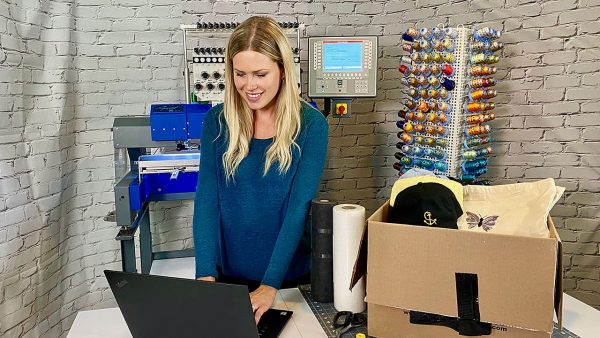The world of e-commerce and service platforms is rapidly evolving, with marketplace app development taking center stage in the digital economy. As we move toward 2025, the expectations for marketplace apps are higher than ever. These apps need to be more than just a platform that connects buyers and sellers—they must deliver innovative features, seamless user experiences, and advanced technologies to stay competitive.
In this blog, we’ll explore what it takes to develop a cutting-edge marketplace app in 2025, highlighting the essential steps, key technologies, and trends shaping the future of marketplace app development.
Identifying the Niche and Defining the Target Audience
The first step in building a cutting-edge marketplace app is defining your niche. Whether you are targeting a product-based marketplace like Amazon, a service-based platform like Fiverr, or even a rental marketplace like Airbnb, the success of your app starts with understanding the market.
In 2025, users will demand highly tailored experiences, so choosing a specific niche is crucial for creating value for your users. For instance, niche marketplaces catering to eco-friendly products, virtual services, or local businesses are trending and are likely to be popular in the coming years.
Equally important is identifying your target audience. Market research and user feedback will help you understand your audience’s pain points, preferences, and behaviors, enabling you to tailor your app’s features to meet their needs.
Choosing the Right Business Model
The business model you choose plays a significant role in the structure and success of your marketplace app. In 2025, the business models for marketplace app development will continue to include several popular options:
- Commission-based: The platform takes a percentage of every transaction made between buyers and sellers.
- Subscription-based: Users pay a recurring fee to access the platform or special features.
- Freemium model: Basic access is free, but users can pay for premium features.
- Listing fees: Sellers are charged for listing their products or services on the platform.
Selecting the right model depends on the nature of your marketplace and your revenue goals. A good model ensures profitability while keeping both buyers and sellers engaged.
Designing an Intuitive and User-Friendly Interface
User experience (UX) is a critical factor in determining whether your marketplace app will succeed. In 2025, consumers will expect a seamless, intuitive interface that allows them to navigate the app effortlessly. A clean design, simple navigation, and fast-loading pages are essential.
Key design elements to focus on include:
- Minimalist Design: Simplify the design to focus on functionality and easy navigation.
- Personalized Dashboards: Allow both buyers and sellers to manage their accounts with customizable features and easy-to-access data.
- Clear CTA (Call-to-Action): Well-placed buttons for transactions, messaging, and other actions will improve user flow.
It’s also important to ensure your app is accessible to all users, including those with disabilities. Accessibility features, like voice commands and easy-to-read fonts, will be critical in the design process for marketplace app development in 2025.
Leveraging Advanced Technologies
One of the most important aspects of building a cutting-edge marketplace app is incorporating the latest technological advancements. As technology evolves, so do the expectations of users. Here are a few key technologies that will shape marketplace app development in 2025:
Artificial Intelligence (AI)
AI will continue to play a pivotal role in enhancing user experience in marketplace apps. Personalized recommendations, smart search functionalities, and predictive analytics powered by AI can make the shopping or service experience more relevant and engaging for users.
For sellers, AI tools can help manage inventory, optimize pricing, and analyze market trends, offering valuable insights that drive better decision-making.
Machine Learning (ML)
Machine learning can be used to analyze user behavior, predict trends, and personalize offerings. For instance, an ML algorithm could detect patterns in user preferences and recommend products or services based on their previous actions.
In 2025, ML will likely be embedded into various parts of marketplace app development, including fraud detection, personalized content, and dynamic pricing models.
Blockchain Technology
With increasing concerns about security and transparency, blockchain technology will be a key feature for marketplace apps in 2025. Blockchain allows secure, decentralized transactions, which can help ensure the integrity of payments, reviews, and contracts on your platform.
For marketplaces dealing with high-value goods or services, blockchain can provide a trustless environment, making it safer for both buyers and sellers.
Augmented Reality (AR) and Virtual Reality (VR)
AR and VR technologies are reshaping how users interact with products and services. In 2025, marketplace apps that sell physical goods could benefit from AR features that allow users to “try” products before purchasing. For example, users could see how a piece of furniture fits in their home or how a clothing item looks on them through AR.
Similarly, VR could allow users to tour virtual homes or test services in immersive environments, elevating the overall shopping experience.
Chatbots and Conversational AI
Automating customer service is a must in 2025. AI-powered chatbots and virtual assistants can handle customer queries, suggest products, or guide users through the buying process. By incorporating conversational AI, you can provide instant support, enhance user engagement, and reduce response time for customer service issues.
Ensuring Security and Privacy
In the digital age, security is paramount for marketplace apps. Buyers and sellers need to trust your platform with their personal and financial information. Developing a cutting-edge marketplace app in 2025 means prioritizing security features like:
- Secure Payment Gateways: Ensure all transactions are encrypted and use secure payment methods.
- Two-Factor Authentication (2FA): Add an extra layer of security by requiring users to verify their identity with a second factor, such as a text message or authentication app.
- Data Encryption: Protect sensitive user information, such as payment details and personal data, with strong encryption protocols.
- Privacy Compliance: Stay compliant with the latest privacy regulations (like GDPR) to protect user data and avoid legal complications.
Optimizing for Mobile and Cross-Platform Functionality
Mobile-first development is the standard approach for marketplace app development in 2025. With the majority of users accessing apps via smartphones, you’ll need to ensure your marketplace app is optimized for mobile devices. This includes:
- Responsive Design: The app should adapt to different screen sizes and orientations.
- Fast Load Times: Pages should load quickly, even on mobile networks.
- Cross-Platform Compatibility: Ensure your app works seamlessly across Android and iOS devices, and consider web accessibility for users who prefer browsing on desktops or tablets.
Building a Strong Ecosystem and Community
A cutting-edge marketplace app is not just a tool—it’s a community. In 2025, fostering a strong ecosystem of buyers and sellers will be essential. Encourage interaction between users with features like reviews, messaging, and social integration. Loyalty programs, rewards, or referral bonuses can also incentivize users to stay engaged and attract new members to the platform.
Continuous Improvement and Innovation
The marketplace landscape is constantly changing. To stay ahead in 2025, you’ll need to continuously improve your app by adding new features, updating security measures, and responding to user feedback. Staying adaptable and open to change will ensure your marketplace app remains cutting-edge and competitive in a fast-evolving market.
Conclusion
Developing a cutting-edge marketplace app in 2025 requires a blend of advanced technologies, intuitive design, robust security, and a clear understanding of your audience. By leveraging AI, blockchain, and mobile optimization, and by building a community-driven platform, you can create a marketplace app that not only meets user expectations but also leads to innovation. With the right approach to marketplace app development, your app can thrive in the competitive landscape of tomorrow’s digital economy.




